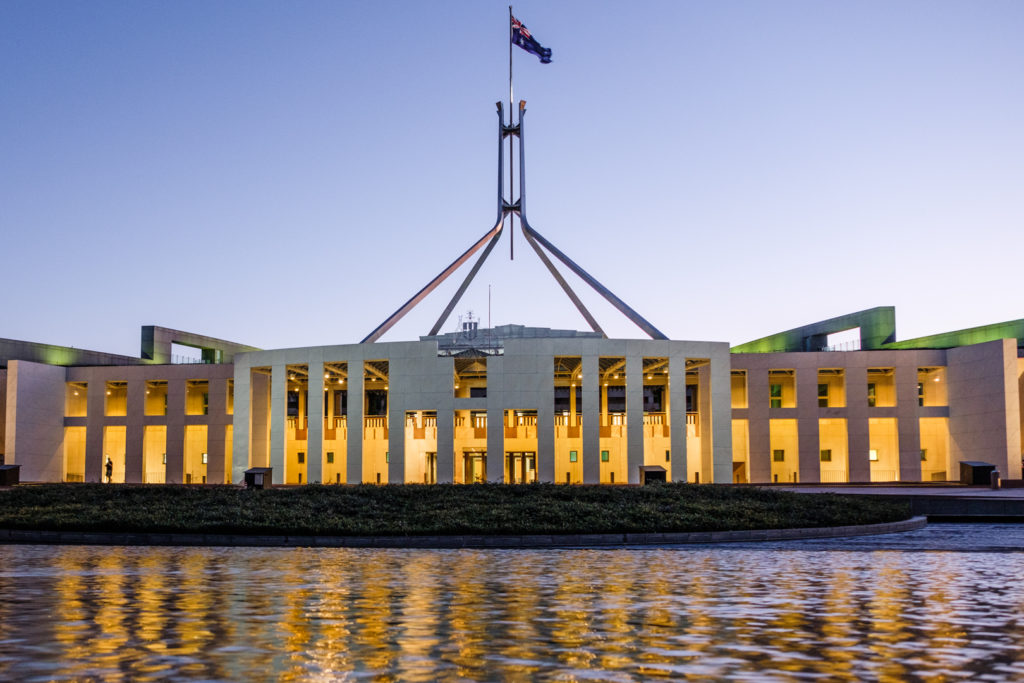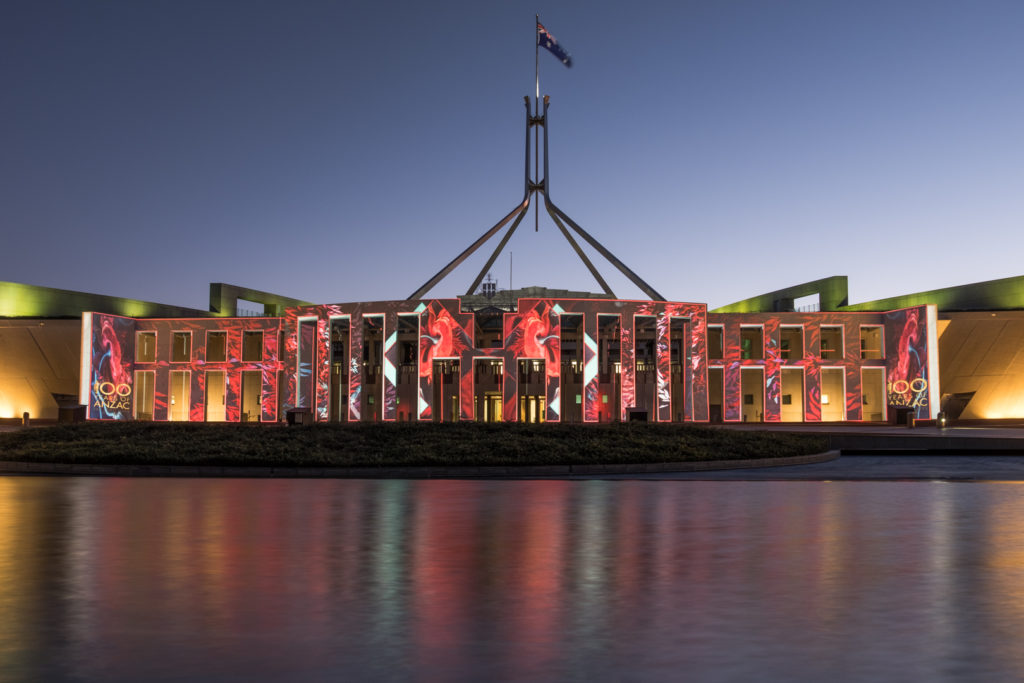Bob Katter Jr is a riddle wrapped in an enigma topped with a cowboy hat. A man renowned for the social conservatism which led him to claim there were no gay people in his electorate, and yet who also criticises the Rudd/Gillard industrial relations reforms as not going nearly far enough in favour of workers. A man who lists as paragons ‘Red Ted’ Theodore and Ben Chifley but who served in the cabinet of Joh Bjelke-Petersen. The best way to understand a man is to listen to what he has to say, so I’m reading An Incredible Race of People to see if this enigma can be unravelled.
This is Bob’s history of Bob’s Australia, and he deploys a narrow but deep gaze upon the elements and characters which have crafted his vision of Australia. The informality of his writing style fits the oafish hick persona which Bob is happy to play up to the media, but the depth and range of references demonstrate a far wider range of scholarship than would be expected, and certainly more than that presented by Tony Abbott, by way of comparison. Nonetheless, this is a tale full of tough blokey men from the Queensland outback who weren’t afraid to ruffle the feathers of those ivory tower dwelling city-slickers.
Katter eschews the classical first fleet narrative and heads straight to Cloncurry’s founding and Queensland’s development in the late 1800s. Curiously for a man who served 26 years in parliaments for the National Party before splitting away, the story of early life in Australia is seen almost entirely through the lense of unions and the Labor Party fight for worker conditions. Bob lays down the depth of deprivation for regular workers in early 1900s Queensland, as large corporations like CSR applied their monopsony power to place workers in what he deems “almost like a master-servant relationship”. Against this corporate tyranny, ‘Red Ted’ Theodore and the AWU rose up to struggle for workers rights. We can begin to see the genesis of Bob’s political vision as he cheers on the actions of the Labor government to establish binding wage arbitration, redistribute land from big corporations to ordinary workers, establish a series of government owned abbotoirs and abolish the upper house of parliament.
Bob wants government to be an active participant in society, rather than a bystander and facilitator. Whether this is through direct public intervention like the Theodore government or through subsidy of private corporations as in the Bjelke-Petersen government is not important. He has no faith in the market sorting itself out. But along with this, he also has no care or conception for conflicts of interest or abuse of power. Aggressive and flagrant ethical violations are continually justified as the required actions of these great men of history. As Bob puts it, “the propriety of their methods was of little concern to a Bjelke-Petersen or a Theodore, men who had a nation to build.”
This talk of aggressive government intervention might bring to mind Fred Paterson and the communist presence in North Queensland at this time, but Bob is keen to draw a line between his heroes and the hard-left. Katter decries the “anti-win mentality of the left” who were “more interested in class warfare than development and prosperity.” In practice, this appears to be primarily a matter of mentality rather than policy for Bob, who happily cheers on Theodore’s vision of “an owner-operator society where men sold their labour through collectively owned means of production” and union direct action against scabbing as “a rallying point of victory and success by the Australian people”.
The Australian people’s fight in New Guinea is the subject of a fairly routine retelling, which tells us more around its edges and absences than in the bog-standard story. He dedicates a fifth of the book to this fight in World War Two, but mentions WW1 only in passing through the fight against conscription, and completely ignores any wars since. Again, this is Bob’s history of Bob’s Australia, an idiosyncratic tale. His nationalism comes through in his condemnation of the leaders who were subservient to Britain and whose actions which were more concerned with the protection of the motherland than Australia. But in the consideration given to Japanese anti-colonialist objectives he demonstrates a wider perspective than would be expected, especially from a book titled An Incredible Race Of People.
The core of Bob’s philosophy is best distilled through his lionisation of the Bjelke-Petersen government and what he calls Developmentalism. The environment exists to be exploited by man, and government’s job is to facilitate that. His heroes here shift to men like Les Theiss, Laurence Harnett and Essington Lewis (who was also raised as an exemplar by Andrew Leigh, subject of my last Book Nook), those who rose from working class origins to build companies associated with production and retained that connection with their workers. Government should be actively involved in building these companies, with tariffs, contracts and subsidy all considered.
These blokes are seen as underdogs fighting against the evils of foreign corporations, and are encouraged by government in order to ensure these industries are Australian owned. But with such a focus on development over other considerations, Katter is quite willing to let graft and insider trading slide as long as it is in the service of this ideology. The same Russell Hinze who resigned from parliament after damning reports of corruption to Bob “represented what Australian politicians should be.”
In Katter’s telling, Australia’s decline started with the ascent of Gough Whitlam. But this was not for the issues you might expect a conservative to take with the great reformer – Bob sees Whitlam as starting the rise of the ‘educrat’, politicians who were university educated bureaucrats rather than the traditional working class with “dirt under their fingernails”. The great issue which Katter takes with the Whitlam government is the unilateral slashing of tariffs. The protectionism implicit in these tariffs is core to the developmentalist philosophy which Katter espouses. So rather than my view of Whitlam as the last great social democrat, Katter considers Gough as the first neoliberal (which he terms Marketism, but is better known by the common term).
Since Whitlam, Bob traces the gradual growth of neoliberalism and free trade, demonstrating how these policies have hurt primary producers and the rural areas. He sees Keating and Costello as ideologues responsible for aggressive free trade policies and the National Party abandoning the party’s values in favour of this market-centred ideology. The willingness of these politicians to drop our trade barriers without corresponding reductions in subsidy from our partners comes in for particular opprobrium. Bob’s country focus delivers a perspective on these policies which city-slickers in the service industries like myself often fail to consider. In outback North Queensland where 25% of the population are employed in mining and agriculture is clearly the 2nd biggest employer, the impacts on these industries are critical to the survival and success of regional communities.
However, this focus also flows through into a complete ignorance of environmental issues. Although Bob is happy to stop importation of foreign foods to prevent the spread of disease, he sees these concerns only through the realm of production and development. He deems the World Heritage declaration of the Daintree Rainforest “an economic iron curtain”, blaming it for the suicide of former timber mill workers. When he puts forth his vision for the future, he suggests that rather than reducing irrigator water allocations to ensure flow through the Murray-Darling Basin, he would rather reduce the size of the Alexandrina and Menindee Lakes.
This future vision lays the environmental devastation which Katter supports clear. He sees massive geoengineering schemes, from a seawater canal between the Spencer Gulf and Lake Eyre to massive damming in Queensland and WA to create the conditions for massive sugar cane fields. Bob sees an Australia with a rapidly increasing immigration program, in order to build a country of 55 million people by 2037. He wants to be one of the great men he depicts, building Australia through massive infrastructure schemes.
But Bob’s history is also notable in what he chooses not to include. There are hardly any woman in his story, nor any mention of the vast change in womens’ status in Australian society. Social issues in general are scarce, as he focuses entirely on these great men of business and politics. This fits entirely with his political focus, but allows some of his more loathsome personal opinions to avoid scrutiny.
Fundamentally, Bob Katter’s vision of the world is rooted in the past. He is best seen as a pure conservative, looking to take us back to the days of his childhood in the 1950s, a world of big men with big egos building the nation on the sheep’s back. But unlike those who wear the trappings of social conservatism in order to camouflage an aggressive dedication to markets, the past Bob wants to return to includes strong unions, worker protections, government investment and acceptance of immigrants. With his prediliction for development regardless of the consequences, he certainly shouldn’t be allowed anywhere near the levers of power. But nonetheless, city folks should pay heed to the opinions of those like Bob who understand the impact of policy on regional areas. The National Party could stand to be closer to Katter’s prescriptions rather than those of Barnaby Joyce.
An Incredible Race of People: A Passionate History of Australia by Bob Katter was published by Murdoch Books in 2012. My copy was purchased 2nd hand at a Lifeline Bookfair.






















